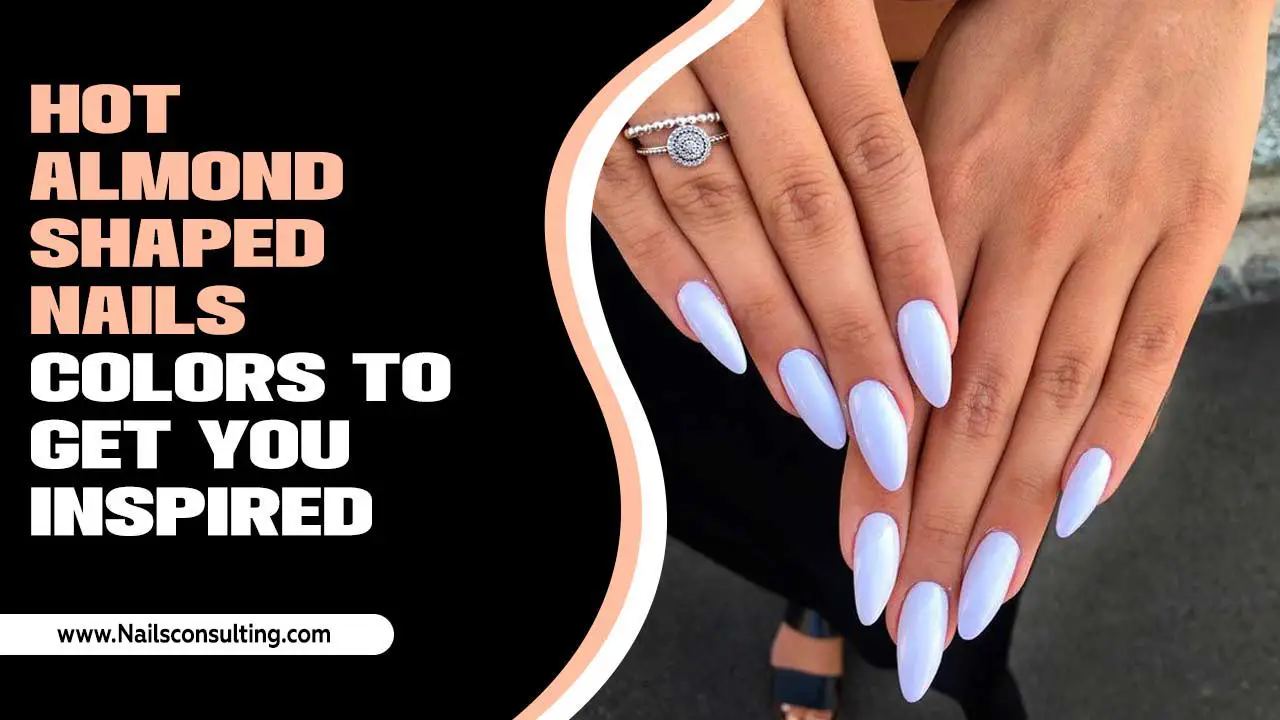Quick Summary:
Don’t let a chipped nail design ruin your day! This guide shows you easy, beginner-friendly ways to quickly fix chipped nail art and polish, making your manicure look fresh again in minutes.
We all love a beautiful nail design or a fresh coat of polish, but over time, chips and nicks can happen. It’s a common frustration, especially when you’re on the go or don’t have time for a full remake. But don’t despair! With a few simple tricks and the right tools, you can easily repair those imperfections and keep your nails looking polished and perfect. This guide will walk you through everything you need to know to banish chipped nail designs and maintain salon-worthy nails right at home. Let’s get those nails looking fantastic again!
Reviving Your Chipped Nail Designs: A Beginner’s Handbook
At Nailerguy, we believe that beautiful nails are for everyone, and that includes being able to fix those inevitable little mishaps. Whether it’s a tiny chip on the edge of your favorite color or a more noticeable ding in a complex nail art design, you don’t have to hide your hands. This guide is designed with beginners in mind, breaking down the process into simple, manageable steps. We’ll cover quick fixes for simple polish chips and more detailed touch-ups for intricate designs. Get ready to become a nail repair pro!
Assessing the Damage: What Needs Fixing?
Before you dive into repairs, take a moment to look at the chip. The type of fix needed depends on the extent of the damage. Is it just a tiny flake on the outermost edge of your nail? Or has a significant portion of the design lifted off?
- Minor Chips: These are typically small nicks or flakes on the edge or surface of the polish. They often happen from everyday wear and tear.
- Deeper Chips/Cracks: These involve a more significant loss of polish or even a crack in the nail itself.
- Design-Specific Issues: For nail art, chips might affect painted lines, glitter particles, or even small embellishments.
Essential Tools for Nail Repair
You don’t need a lot of fancy equipment to fix chipped nail designs. Most of these items are likely already in your nail care stash. Having them ready means you can tackle a chip the moment you spot it!
Here’s what you’ll want to have on hand:
- Nail File: A fine-grit file (around 240 grit or higher) is best for shaping and smoothing edges without damaging natural nails.
- Buffer Block: A gentle buffer can help smooth out any rough edges left after filing.
- Your Original Nail Polish/Art Supplies: This is crucial! You’ll need the exact color or polish used for the design. For intricate art, small brushes or dotting tools might be necessary.
- Clear Top Coat: This is your best friend for sealing in repairs and adding shine.
- Cuticle Stick or Orangewood Stick: Useful for cleaning up stray polish and gently lifting edges if needed.
- Rubbing Alcohol or Nail Polish Remover: For cleaning the nail surface before you start.
- Cotton Pads or Lint-Free Wipes: To apply remover or alcohol.
- Optional: Nail Glue or Nail Repair Kit: For more severe chips or cracks that affect the nail structure itself. You can find these at most drugstores.
Quick Fixes for Simple Polish Chips
Got a minor chip on an otherwise solid color or simple design? This is the easiest type of repair. The goal here is to make the chip disappear seamlessly.
Step-by-Step Guide:
- Cleanse the Nail: Gently wipe the chipped nail with a cotton pad soaked in rubbing alcohol or a tiny bit of nail polish remover. This removes any oils or debris that could prevent the polish from adhering properly.
- Smooth the Edges: Take your fine-grit nail file and gently file the chipped edge. The goal is to smooth it so it blends with the rest of your nail. You’re not reshaping the entire nail here, just gently buffing the rough spot.
- Apply Your Polish: Carefully apply a thin layer of your original nail polish over the chipped area. Try to feather the edges slightly so it blends with the existing polish. Sometimes, a very light touch and a small amount of polish is all you need.
- Let it Dry: Allow this layer to dry completely. Patience is key! If you try to apply a top coat too soon, you could smudge your repair.
- Add a Top Coat: Once the polish is dry, apply a thin, even layer of clear top coat over the entire nail. This seals the repair, adds shine, and helps to even out the surface, making the chip virtually invisible. For best results, consider using a quick-dry top coat.
This method works wonders for everyday chips and keeps your manicure looking freshly done!
Repairing More Noticeable Chips and Cracks
If the chip is deeper, has lifted a larger section of polish, or has created a slight crack, you might need a slightly more involved approach. For structural cracks in the nail itself, it’s a good idea to seek professional advice or use a dedicated nail repair kit to prevent further damage.
For significant polish chips:
- Clean the Area: As before, use rubbing alcohol or remover to clean the nail and the surrounding Polish.
- Gently File: Carefully file down any lifted edges or rough spots. If the chip has caused a lifted flap of polish, you might need to gently file it flat to create a smooth surface to work with.
- Fill the Gap (Optional but Recommended): For deeper chips, you can use a tiny dab of clear polish or even nail glue (use sparingly!) to fill the crevice. Let this dry completely. This creates a more solid base than just polish alone.
- Apply Base Coat (If Needed): If the underlying nail is exposed or you used nail glue, applying a thin layer of clear base coat can help create an even surface and protect the nail.
- Color Application: Now, carefully apply your original polish. You might need two thin coats to build up the color and coverage in the repaired area. Try to paint in the direction of the chip for a smoother blend.
- Seal with Top Coat: Once the color coats are perfectly dry, apply a generous layer of clear top coat over the entire nail. This is essential for hiding the repair and providing protection.
Remember, building up thin layers of polish and allowing each to dry thoroughly is the secret to a seamless repair.
Fixing Chipped Nail Art Designs
This is where things can get a little trickier, but it’s definitely manageable! The key is having your original art supplies handy.
Scenario 1: Chip on a Solid Base Color with Simple Art (e.g., dots, lines)
- Assess the Art: See if the chip affected the base color, the art element, or both.
- Repair Base Color: Follow the steps for fixing simple polish chips if only the base color is affected.
- Redo the Art Element: Once the base color repair is dry and sealed with a top coat, use your original art tools (dotting tool, fine brush) and polish to carefully recreate the lost art element (dot, line, etc.) directly over the repaired spot.
- Seal Again: Apply a final layer of clear top coat to blend and protect your masterpiece.
Scenario 2: Chip Affecting Intricate Designs or Glitter
- This can be the most challenging, as replicating intricate patterns is difficult.
- For Glitter: If you’ve chipped a glitter design, you can often carefully pat on more matching glitter polish or loose glitter with a brush and a clear polish medium. Seal with a top coat.
- For Detailed Art: Sometimes, the best solution is to embrace a “less is more” approach or try a partial design. For example, if a corner is chipped, you could add a small accent like a strip of tape for a French tip effect, or a small charm to cover the imperfection.
- Consider a “Franken-Nail”: If a chip is too extensive to fix without looking obvious, you might have to consider giving that nail a quick polish change. You can then try to match the design on the other nails or opt for a completely new, simpler design on all nails.
For specific nail art repair, referring to the original tutorial or looking up similar techniques can be incredibly helpful. For example, if you’re dealing with gel polish, the repair process might involve curing under a UV/LED lamp, so always check the product instructions.
When to Consider a Full Redo
No one wants to spend time on repairs only for them to look worse than the original chip! There are times when starting fresh is the best option for your nails and your sanity.
- Widespread Chipping: If multiple nails have significant chips, or if one nail is so damaged it’s distracting, a full manicure might be quickest.
- Peeling Polish: Polish that is peeling off in large sheets is very difficult to patch seamlessly.
- Structural Nail Damage: If your nail is cracked or broken, a quick polish fix won’t help. Consult resources like those from the American Academy of Dermatology (https://www.aad.org/) for proper nail health guidance.
- Desire for Change: Sometimes, you just want a new look! A minor chip can be the perfect excuse to experiment with a new color or design.
Preventing Future Chips
While some chips are unavoidable, there are ways to make your manicures last longer and reduce the frequency of repairs. Prevention is key!
- Always Use a Base Coat: A good base coat creates a smooth surface for polish, helps it adhere better, and protects your natural nail from staining.
- Apply Thin, Even Coats: Thick coats of polish are more prone to smudging, peeling, and chipping. Apply two thin coats rather than one thick one.
- Cap Your Free Edge: When applying your color and top coat, run the brush horizontally along the free edge (tip) of your nail. This seals the polish and prevents it from lifting.
- Use a Quality Top Coat: A good top coat adds durability and shine, protecting your manicure from daily wear. Reapply a thin layer every couple of days for extra protection.
- Get Regular Trims and Filing: Keep your nails at a manageable length. Long nails are more likely to snag and chip.
- Wear Gloves: Protect your hands and nails when doing chores involving water, harsh chemicals, or strenuous activity.
- Moisturize: Keeping your nails and cuticles hydrated can help prevent dryness and brittleness, which can lead to chips. Consider a good cuticle oil.
These simple habits can make a big difference in the longevity of your manicures.
Comparing Quick Repair Methods
Let’s look at a quick comparison of the repair methods we discussed:
| Method | Best For | Pros | Cons | Difficulty |
|---|---|---|---|---|
| Simple Polish Reapplication | Minor edge chips, small nicks | Quick, easy, uses basic supplies | May not work for deeper chips or extensive damage | Beginner |
| Filling & Layering | Deeper chips, small cracks in polish | Creates a smoother surface, better coverage | Requires careful layering and drying time | Beginner to Intermediate |
| Nail Art Redo | Chips in painted designs, glitter | Can seamlessly restore designs | Requires matching art supplies and steady hand | Intermediate |
| Nail Glue/Repair Kit | Structural cracks in the nail | Provides strength and stability for broken nails | Requires specific products, can be tricky to use | Intermediate to Professional |
Choosing the right method ensures the most effective and aesthetically pleasing repair.
Frequently Asked Questions About Fixing Chipped Nail Designs
Q1: How do I prevent my nail polish from chipping so quickly?
Always start with a clean, dry nail. Use a good base coat, apply your color in thin, even layers, and cap the free edge. Finish with a quality top coat, and reapply it every 2-3 days for extra protection. Also, wear gloves when doing housework!
Q2: Can I fix a chip in gel nail polish the same way?
Gel polish repairs are a bit different. While you can do some touch-ups, it’s often best to go back to a salon for gel repairs as they require UV/LED lamp curing. However, for minor chips on the very edge, you might be able to carefully file and apply a matching colored gel and then cure it, followed by a gel top coat. Always follow the specific gel product instructions.
Q3: My nail art chipped. How do I recreate the design?
The best way is to have your original art supplies (polishes, fine brushes, dotting tools) handy. Clean up the area around the chip, then carefully repaint the missing design element. You might need to practice a bit to match it perfectly. Seal it with a top coat afterward.
Q4: What if my nail actually cracked? Can I just glue it?
For shallow cracks in the nail itself, a nail repair kit with a special adhesive and silk or fiberglass wrap can work temporarily. However, if the crack is deep or painful, it’s best to seek advice. A professional might be able to apply a more robust repair, or you may need to file the nail down significantly. Major nail damage should be assessed by a professional to ensure proper healing and prevent infection.
Q5: My chipped nail looks bumpy after I try to fix it. What am I doing wrong?
This usually happens if you’re applying too much polish at once or not letting layers dry fully. Try applying much thinner coats of color. You can also use a buffer block very gently after the polish is dry to smooth out any ridges before applying your top coat. Ensure you’re filing the chipped edge smooth before applying new polish.
Q6: Can I fix a chip on a natural nail vs. acrylics?
Yes, the basic principles are the same, but acrylics and other artificial nails can be more forgiving. For acrylics or gel extensions, you can often file down a chip and then rebuild the area with more acrylic or gel product, then file and shape it. For natural nails, you’re more limited to filling and layering polish to avoid weakening the natural nail structure.
Q7: How long should a quick chip fix last?
A well-executed quick fix can last anywhere from a few days to a week, depending on how well you’ve smoothed the edges, how many layers you’ve applied, and the quality of your top coat. A good cap on the free edge and regular top coat touch-ups will significantly extend its life.
Conclusion: Your Nails, Your Rules!
Dealing with chipped nail designs doesn’t have to be a mood killer. With this guide, you’re now equipped with the knowledge and techniques to tackle minor nicks, deeper chips, and even intricate nail art mishaps. Remember, practice makes perfect, and the most important thing is that you feel confident and happy with your nails. Don’t be afraid to experiment with these fixes – you might be surprised at how effective they are! Keep your favorite polishes and tools handy, embrace the little imperfections as opportunities to get creative, and enjoy your beautiful, resilient manicures. Your nails are a canvas for your personal style, so keep them looking their best, one fix at a time!



